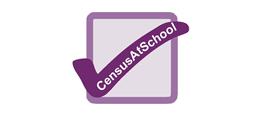- View more resources from this publisher
 CensusAtSchool
CensusAtSchool
Census at School
The CensusAtSchool UK project began in 2000 in conjunction with the National Statistics Office. The project, originally a one-off, was linked to the UK population census of 2001. It has now developed into a dynamic, ongoing and exciting initiative running in a number of countries.
It aims to:
• Involve students in collecting data about themselves and improve understanding of a data gathering process, its purpose and benefits to society
• Foster a positive attitude to statistics through using real data that is of interest to students
• Enhance the process of statistical enquiry across the curriculum
• Encourage effective Information and Communication Technology (ICT) teaching and learning, including the use of the Internet
• Provide access to large and meaningful data sets
• Make comparisons between the student responses in different countries.
This collection of resources from the project covers the whole primary and secondary age range. They have been written to help teachers use CensusAtSchool data in their classrooms, most are in worksheet format but many include data sets that run in Excel. A few solutions are also included.
These resources are made available under an open government licence v3.0.
Resources
Filter
Statistics Statements Key Stage Three
This Key Stage Three resource form CensusAtSchool is based on key concepts needed by students to understand basic statistics. Pairs are asked to discuss statements on cards and decide, with justifications, if the statement is true, false or sometimes true.
...Statistics Statements Key Stage Four
This CensusAtSchool resource is based on key concepts needed by students doing GCSE mathematics, although it may be useful for an introductory review at A level or for strong Key Stage Three students. Pairs are asked to discuss statements on cards and decide, with...
Vitruvian Man
This new curriculum resource from CensusAtSchool is presented at two levels of difficulty. This idea is relatively current as it links with the 'Da Vinci code' and the theory of the Vitruvian man as put forward by Leonardo da Vinci (1452–1519).
...What Is an Average?
This full lesson plan, plus dataset and worksheet, from CensusAtSchool is designed to help students understand the different types of average, how to calculate and compare them and which average it is appropriate to use for a particular data set.





